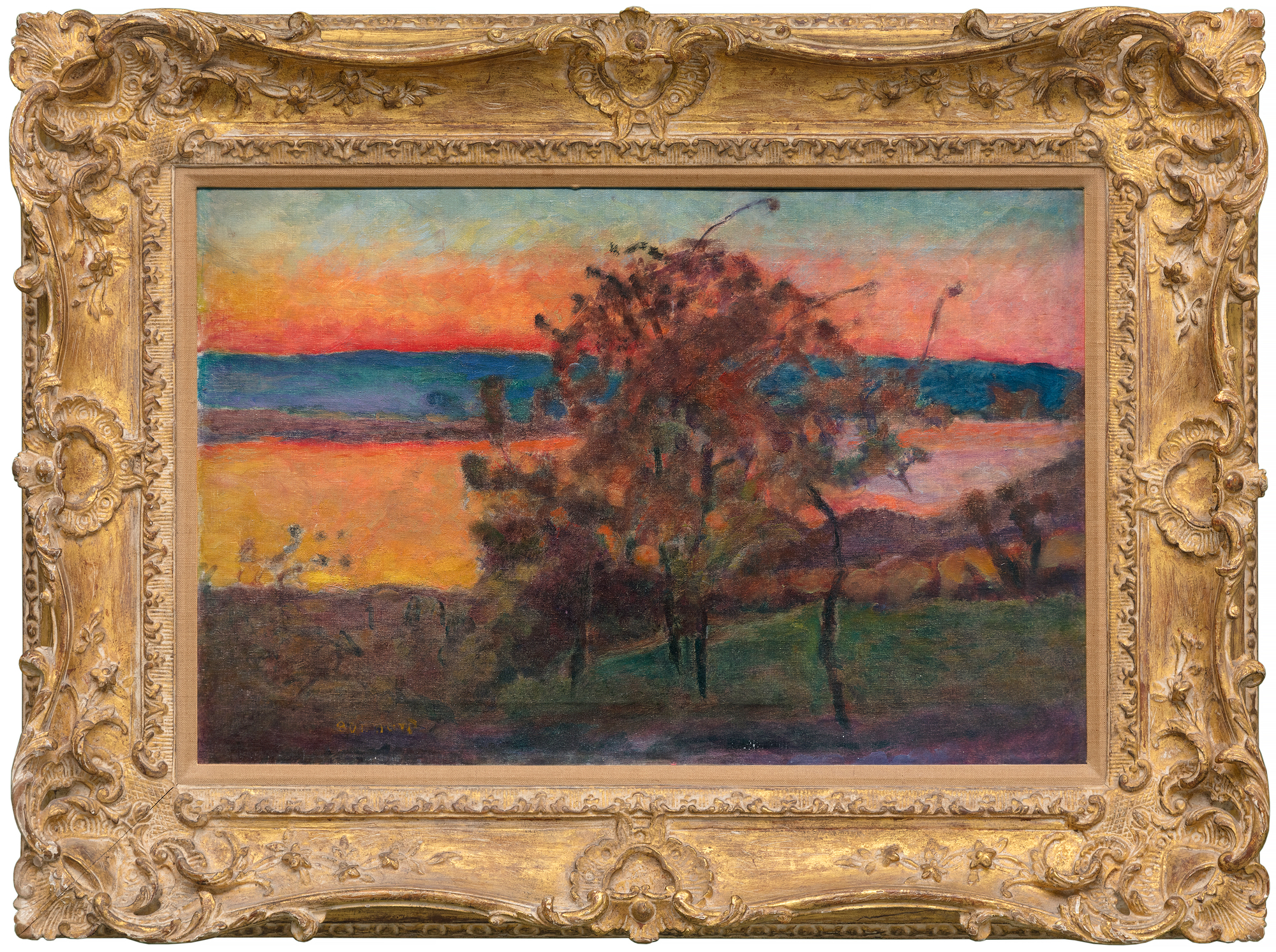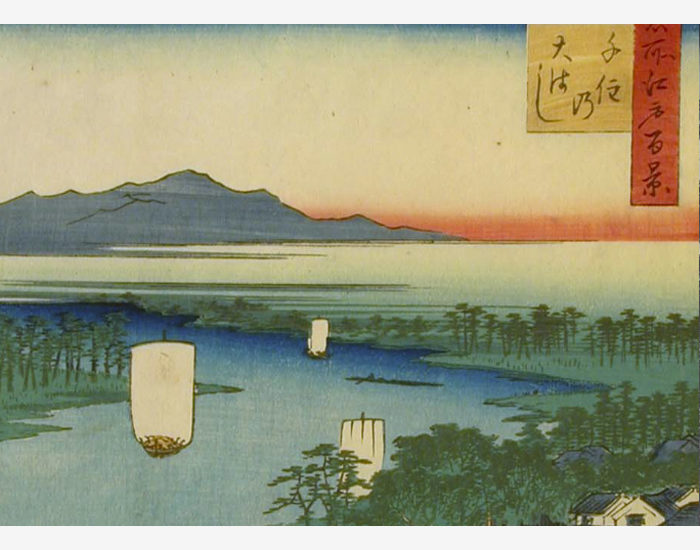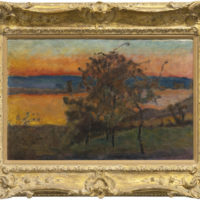PIERRE BONNARD (1867-1947)










Provenance
Bernheim-Jeune, Paris, acquired from the artist in 1920Georges Besnard, acquired from the above
Bernheim-Jeune, Paris, acquired from the above in 1927
Mr. Worcester, Chicago, acquired from the above
E. & A. Silberman Galleries, New York
Knoedler Gallery, New York
Michael J. Miller, Cleveland, acquired by 1988
Salander O'Reilly Gallery, New York
Private Collection, acquired from the above
Literature
Jean & Henry Dauberville, Bonnard, Catalogue raisonné de l'oeuvre peint 1920-1939, vol. III, Paris, 1973, no...More.... 998, illustrated p. 36...LESS...
History
Pierre Bonnard moved on artistically when Les Nabis, the group of artists who ushered Impressionists into the 20th century and modernism disbanded by 1900. Yet the influence of those early years never completely dissipated. Soleil Couchant, painted two decades later, takes us back to a time when Paul Sérusier shared with Bonnard a brightly colored, nearly abstract sketch he had painted under the watchful eye of Paul Gauguin. That sketch, Le Talisman, emulated the expressive color and bold patterns of Gauguin, emphasized decorative unity, and most importantly for Bonnard, represented not a representation of a scene, but a painter’s visual sensations. More importantly, perhaps, it was Bonnard who acquired the nickname “le Nabi trés Japonard,” or, “the ultra-Japanese Nabi.” He had been introduced to ukiyo-e woodblock prints at Goupil Gallery and became infatuated with their decorative contours, flattened color, asymmetrical compositions, and Bokashi, the graduated color transitions that are probably the ukiyo-e’s most recognizable and evocative technique. Japonisme, a French artist’s interpretation of the aesthetic, liberated Bonnard from western conventions and enabled him to produce intimate works reflecting his personal temperament.
From 1910 onward, Bonnard spent a great deal of time on the coasts of St. Tropez, Cannes, and Antibes. Soleil Couchant is presumed to have been painted near one of these coastal towns. Rather than work in the open air in the manner of the Impressionists, Bonnard mastered the ability to paint from sketches, photographs, and the power of his imagination. He was also renowned for retouching paintings and constantly subjecting them to changes, sometimes radically changing his original conception. He was obsessive in this behavior, so much so that on a visit to the Luxembourg Museum, he persuaded his friend Édouard Vuillard to distract the guards while he surreptitiously retouched one of his paintings that had been in the collection for several years.
MoreMARKET INSIGHTS
- The rate of return for the Bonnard Art Index since 1976 is 401.2%. Bonnard has proven to be a consistent performer at auction, and on the private market.
- Bonnard was a central figure of the Nabis group, he is cemented in the canon of art history.
- Bonnard is represented in several dozen prominent museum collections, as well as some of the top private art collections internationally.
- Bonnard is part of an elite group of artists to sell for more than $15 million USD.
Top Results at Auction

"La Terrasse ou Une terrasse à Grasse" (1912) sold for $19,570,000.

"Terrasse à Vernon" (1923) sold for $11,598,000.

"Le petit déjeuner, radiateur" (c. 1930) sold for $9,207,000.

"Deux corbeilles de fruits" (1906-1907) sold for $7,637,909.
Comparable Paintings Sold at Auction

"Le jardin sous la neige, soleil couchant" (c. 1910) sold for $422,500.
- Painted about ten years before Soleil Couchant
- Somewhat larger than Soleil Couchant
- Similar horizontal composition
- Similar landscape at sunset subject

"Jardin à Vernonnet" (1915) sold for $365,000.
- Painted five years before Soleil Couchant
- Somewhat larger than Soleil Couchant
- Similar horizontal composition
- Similar landscape at sunset subject

"Paysage au soleil couchant" (1916) sold for $213,612.
- Painted four years before Soleil Couchant
- Roughly the same size as Soleil Couchant
- Similar horizontal composition
- Similar landscape at sunset subject









































